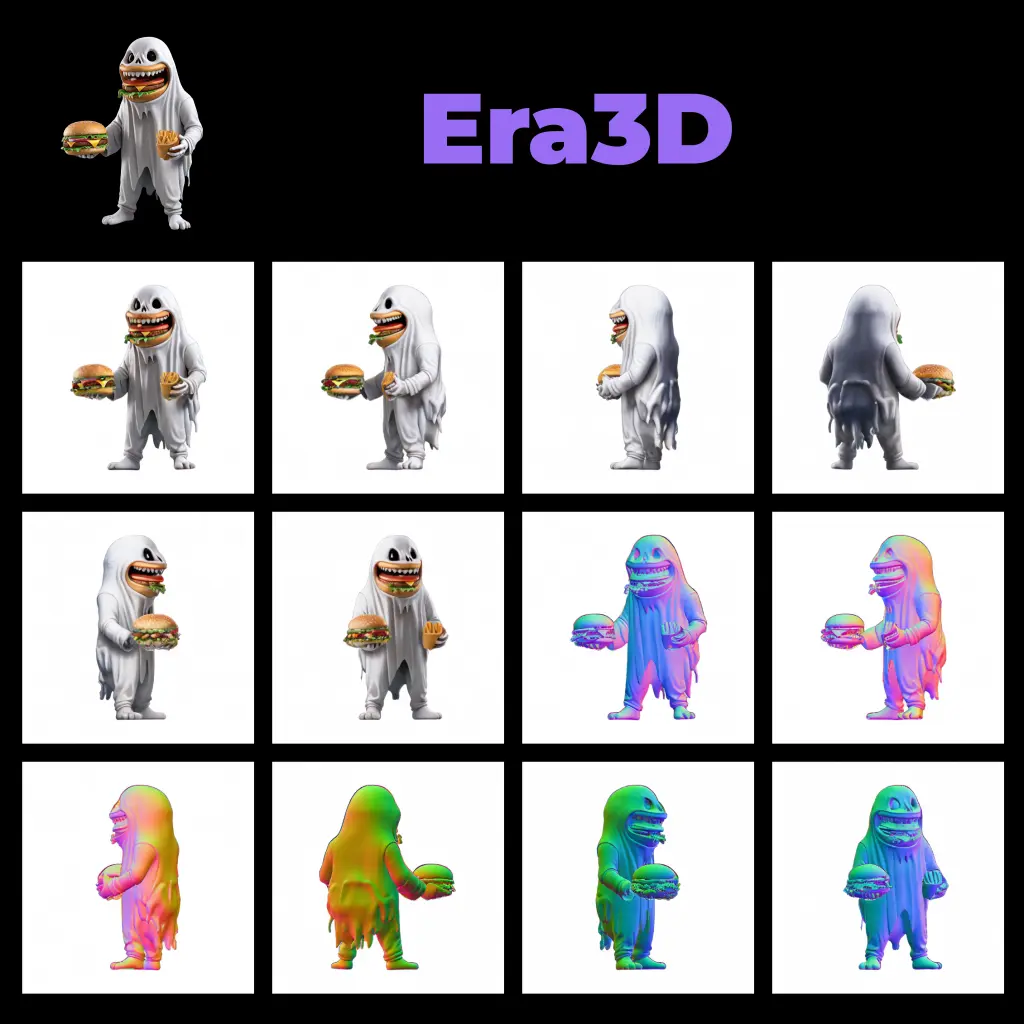ComfyUI Node: StreamingT2VRunLongStepVidXTendPipelineCustomRefOutExtendOnly
StreamingT2VRunLongStepVidXTendPipelineCustomRefOutExtendOnly
CategoryStreamingT2V
chaojie (Account age: 5118days) Extension
ComfyUI_StreamingT2V Latest Updated
2024-06-14 Github Stars
0.04K
- Description
- StreamingT2VRunLongStepVidXTendPipelineCustomRefOutExtendOnly:
- StreamingT2VRunLongStepVidXTendPipelineCustomRefOutExtendOnly Input Parameters:
- StreamingT2VRunLongStepVidXTendPipelineCustomRefOutExtendOnly Output Parameters:
- StreamingT2VRunLongStepVidXTendPipelineCustomRefOutExtendOnly Usage Tips:
- StreamingT2VRunLongStepVidXTendPipelineCustomRefOutExtendOnly Common Errors and Solutions:
- Related Nodes
How to Install ComfyUI_StreamingT2V
Install this extension via the ComfyUI Manager by searching for ComfyUI_StreamingT2V- 1. Click the Manager button in the main menu
- 2. Select Custom Nodes Manager button
- 3. Enter ComfyUI_StreamingT2V in the search bar
Visit ComfyUI Online for ready-to-use ComfyUI environment
- Free trial available
- 16GB VRAM to 80GB VRAM GPU machines
- 400+ preloaded models/nodes
- Freedom to upload custom models/nodes
- 200+ ready-to-run workflows
- 100% private workspace with up to 200GB storage
- Dedicated Support
StreamingT2VRunLongStepVidXTendPipelineCustomRefOutExtendOnly Description
Extend video sequences with advanced T2V techniques for AI artists, ensuring seamless integration and high-quality results.
StreamingT2VRunLongStepVidXTendPipelineCustomRefOutExtendOnly:
The StreamingT2VRunLongStepVidXTendPipelineCustomRefOutExtendOnly node is designed to extend video sequences by leveraging advanced text-to-video (T2V) generation techniques. This node is particularly useful for AI artists looking to create longer video sequences from shorter clips while maintaining high-quality visual consistency and coherence. By utilizing custom reference frames and focusing solely on the extension aspect, this node ensures that the generated video seamlessly integrates with the original content. The primary goal of this node is to provide a robust and efficient method for extending video sequences, making it an invaluable tool for creative projects that require extended video content without compromising on quality.
StreamingT2VRunLongStepVidXTendPipelineCustomRefOutExtendOnly Input Parameters:
unet
The unet parameter refers to the U-Net model used for generating the video frames. This model is crucial for the node's execution as it helps in creating high-quality and coherent video frames. The U-Net model should be pre-trained and fine-tuned for video generation tasks to achieve the best results.
vae
The vae parameter stands for Variational Autoencoder, which is used to encode and decode video frames. This parameter impacts the quality and consistency of the generated video. A well-trained VAE ensures that the video frames are realistic and maintain the desired visual style.
text_encoder
The text_encoder parameter is responsible for encoding the textual input that guides the video generation process. This parameter ensures that the generated video aligns with the provided textual description, making it essential for achieving the desired narrative or visual theme.
scheduler
The scheduler parameter controls the scheduling of the video generation process. It determines the sequence and timing of frame generation, which can impact the smoothness and coherence of the final video. Proper scheduling ensures that the video flows naturally and maintains temporal consistency.
controlnet
The controlnet parameter is used to provide additional control over the video generation process. It allows for fine-tuning and adjusting specific aspects of the video, such as color, texture, and motion, to achieve the desired visual effects.
tokenizer
The tokenizer parameter is used to tokenize the textual input, breaking it down into manageable units for the text encoder. This parameter ensures that the textual input is properly processed and interpreted by the model, leading to accurate and relevant video generation.
resampler
The resampler parameter is responsible for resampling the video frames to ensure consistent quality and resolution. This parameter helps in maintaining the visual integrity of the video, especially when extending the sequence.
num_frames
The num_frames parameter specifies the number of frames to be generated in the extended video sequence. This parameter directly impacts the length of the final video, with a higher number of frames resulting in a longer video.
num_frames_conditioning
The num_frames_conditioning parameter determines the number of frames used for conditioning the video generation process. This parameter helps in maintaining temporal consistency and coherence by providing context from previous frames.
temporal_self_attention_only_on_conditioning
The temporal_self_attention_only_on_conditioning parameter controls whether temporal self-attention is applied only on conditioning frames. This parameter can impact the temporal coherence and smoothness of the generated video.
temporal_self_attention_mask_included_itself
The temporal_self_attention_mask_included_itself parameter determines whether the temporal self-attention mask includes the current frame itself. This parameter can affect the attention mechanism and the resulting video quality.
spatial_attend_on_condition_frames
The spatial_attend_on_condition_frames parameter controls whether spatial attention is applied on conditioning frames. This parameter helps in maintaining spatial consistency and visual coherence in the generated video.
temp_attend_on_uncond_include_past
The temp_attend_on_uncond_include_past parameter determines whether temporal attention on unconditioned frames includes past frames. This parameter can impact the temporal flow and coherence of the video.
temp_attend_on_neighborhood_of_condition_frames
The temp_attend_on_neighborhood_of_condition_frames parameter controls whether temporal attention is applied on the neighborhood of conditioning frames. This parameter helps in maintaining temporal consistency and smooth transitions between frames.
image_encoder_version
The image_encoder_version parameter specifies the version of the image encoder used in the video generation process. This parameter can impact the quality and style of the generated video, with different versions offering varying levels of detail and visual effects.
StreamingT2VRunLongStepVidXTendPipelineCustomRefOutExtendOnly Output Parameters:
extended_video
The extended_video parameter represents the final extended video sequence generated by the node. This output is the primary result of the node's execution, providing a seamless and high-quality extension of the original video content. The extended video maintains visual consistency and coherence, making it suitable for various creative projects.
StreamingT2VRunLongStepVidXTendPipelineCustomRefOutExtendOnly Usage Tips:
- Ensure that the
unet,vae, andtext_encodermodels are pre-trained and fine-tuned for video generation tasks to achieve the best results. - Adjust the
num_framesparameter based on the desired length of the extended video sequence. - Use the
controlnetparameter to fine-tune specific aspects of the video, such as color, texture, and motion, to achieve the desired visual effects. - Experiment with the
temporal_self_attention_only_on_conditioningandspatial_attend_on_condition_framesparameters to maintain temporal and spatial consistency in the generated video.
StreamingT2VRunLongStepVidXTendPipelineCustomRefOutExtendOnly Common Errors and Solutions:
Model not found
- Explanation: This error occurs when the specified
unet,vae, ortext_encodermodels are not found or not properly loaded. - Solution: Ensure that the models are correctly specified and available in the required directory. Verify the model paths and reload the models if necessary.
Inconsistent frame quality
- Explanation: This error occurs when there is a noticeable difference in quality between the original and extended video frames.
- Solution: Adjust the
resamplerandcontrolnetparameters to maintain consistent quality. Ensure that thevaeandunetmodels are properly fine-tuned for video generation tasks.
Text encoding mismatch
- Explanation: This error occurs when the textual input is not properly encoded, leading to irrelevant or inaccurate video generation.
- Solution: Verify the
tokenizerandtext_encoderparameters to ensure that the textual input is correctly processed. Adjust the tokenizer settings if necessary.
Temporal inconsistency
- Explanation: This error occurs when the extended video sequence lacks temporal coherence, resulting in choppy or disjointed frames.
- Solution: Adjust the
num_frames_conditioning,temporal_self_attention_only_on_conditioning, andtemp_attend_on_uncond_include_pastparameters to improve temporal consistency. Ensure that the scheduling is properly configured.
StreamingT2VRunLongStepVidXTendPipelineCustomRefOutExtendOnly Related Nodes
- Description
- StreamingT2VRunLongStepVidXTendPipelineCustomRefOutExtendOnly:
- StreamingT2VRunLongStepVidXTendPipelineCustomRefOutExtendOnly Input Parameters:
- StreamingT2VRunLongStepVidXTendPipelineCustomRefOutExtendOnly Output Parameters:
- StreamingT2VRunLongStepVidXTendPipelineCustomRefOutExtendOnly Usage Tips:
- StreamingT2VRunLongStepVidXTendPipelineCustomRefOutExtendOnly Common Errors and Solutions:
- Related Nodes
RunComfy is the premier ComfyUI platform, offering ComfyUI online environment and services, along with ComfyUI workflows featuring stunning visuals. RunComfy also provides AI Playground, enabling artists to harness the latest AI tools to create incredible art.



